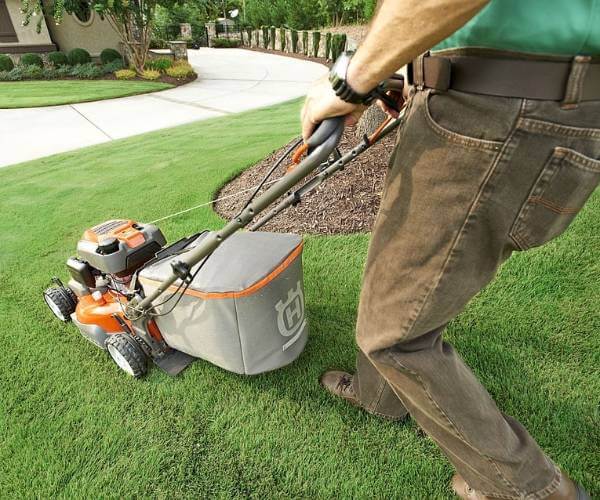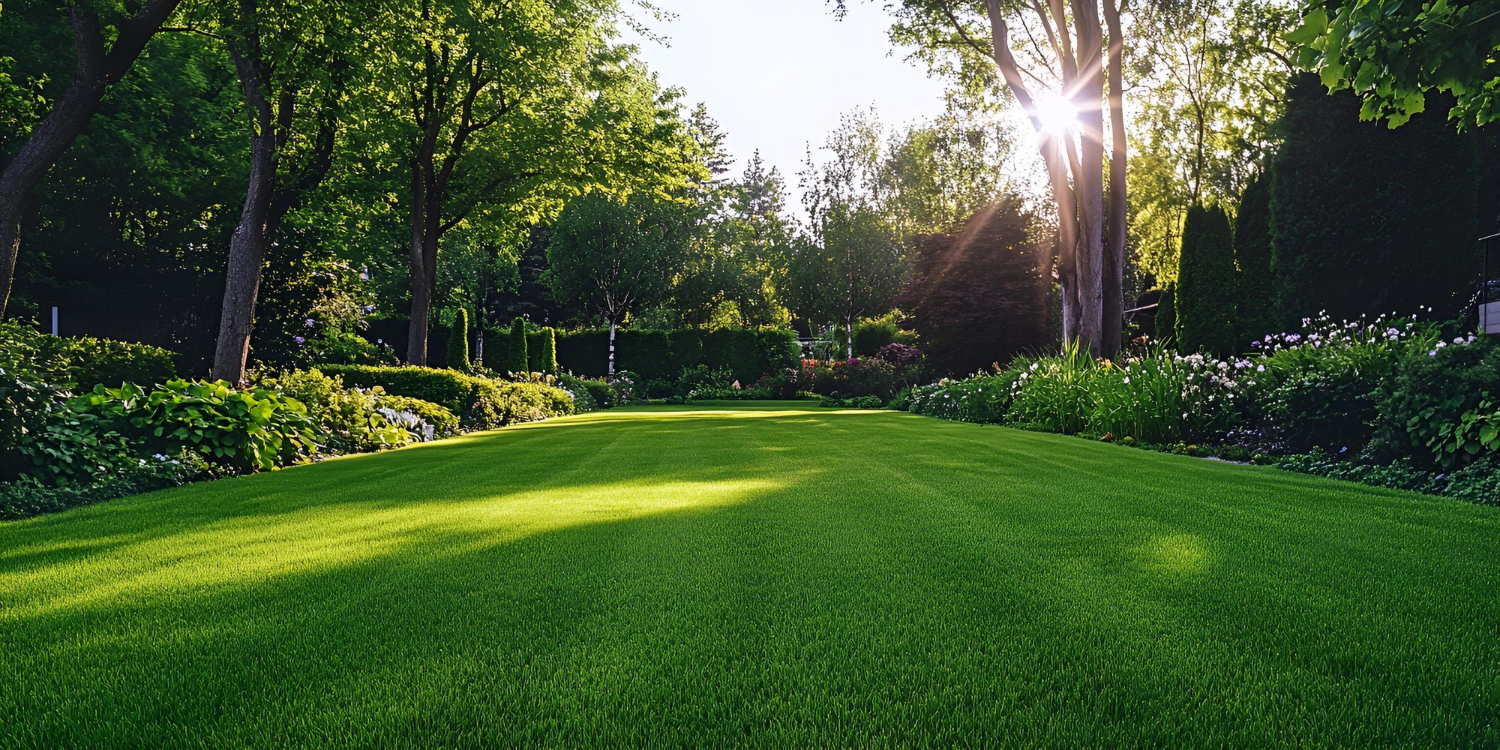- Turf
- Artificial
- Soil
- Timber
- Composite Decking
- Paving & Stone
Get In Touch With Our Experts Today!
Give us a Call! - Seed & Fertiliser
- Dressing
- Bark

June 02, 2017 Summer TipsTurf Tips
Maintaining a well-mowed lawn isn’t just about keeping up with the Jones! It’s an essential part of lawn care to encourage healthy turf and a lovely lawn for you and your family to enjoy. Whether you’re a gardening enthusiast or just looking to keep your lawn trimmed and tidy, understanding why we mow can make all the difference.
Whilst it may not be everyone’s favourite chore, mowing your lawn is an integral part of garden maintenance and will significantly affect the look and health of your grass. It’s a ‘little and often’ task that your garden will really thank you for, and you will reap the rewards in the form of a fantastic-looking, healthy lawn.
In this article, we’ll cover:

Whether your turf is 2 weeks old or 2 years old, start mowing when the grass grows to approximately 25mm high – never removing more than 25% of the grass height at all times. To get the most from your lawn throughout the year, here are our mowing tips for each season:
This is your active growing period when your grass is waking up! You’ll notice rapid growth so that mowing will be more frequent. Start at a medium height to create a good base and help strengthen your grass after a cold winter.
As the temperature rises, protecting your lawn from scorching and drought is essential. Mow at a higher height – longer grass blades will shade your soil and help retain moisture. If there’s not much rain, be sure to water your turf every day, too.
Now’s the time to prepare for winter. As the temperature cools, gradually lower your mowing height to minimise the risk of lawn diseases. As leaves start to fall, keep them off your lawn to avoid smothering your grass and allow more sunlight to come through.
In the UK, the start of our winters has been quite mild. So, if your grass has grown, you could give it one last mow at a high height. But winter is more about maintenance – clear fallen leaves, clean your mower and apply any winter fertiliser if your turf needs support over winter.

Obviously, the height of your grass is entirely down to personal preference. And turf types such as wild flower turf can be left to their own device, only requiring a couple of cuts a year. But in order to keep your lawn as healthy as possible, here are the recommended mowing heights:
Provides an elegant, manicured look. Although this reduces the chance of pests hiding, short grass can weaken. Also, if too much soil is exposed, it can dry out.
Ideal for most lawns as this height encourages deep roots, as well as more shade, better water retention and suppressing weeds.
Although this helps your lawns during hot temperatures, it can look unkempt and a habitat for pests. It can also be harder and take longer to cut once you do.
For more advice on what height to mow your lawn, head to our handy blog.
A quick tip to decide if your grass needs a mow is to look at it! If it’s starting to look a bit wild or too tall, it’s time to mow. If your grass looks thin or bald in patches, apply fertiliser and grass seed before mowing it.
Mowing your grass in different directions can help prevent your soil from compacting and uneven grass growth. It also adds a bit of excitement for you!
If it’s been raining a lot, we don’t recommend mowing your lawn. The rain can make your soil extremely soft, and mowing could result in clumping, uneven cuts, or even churning up your lawn. Read our handy blog on cutting wet grass for more insights.
Grass clippings can add a lot of goodness to your lawn! As they decompose, they enrich your soil, from which your grass will eventually benefit. Still unsure? Our grass clipping blog provides more information on leaving grass clippings on your lawn.
A freshly mown lawn looks amazing! But not all mowers can reach the edge of your lawn, especially if you have flowerbeds, paths or borders. After mowing, use a trimmer to go around and neaten your lawn’s edges – it’ll deliver a better look and finish!
A good cut comes down to good blades. Blunt mower blades can cause more damage – stressing your grass, impacting your grass’s health and resulting in uneven growth. Safely clean and sharpen your mower to ensure a sleek cut every time.
It’s really important to ensure that your lawnmower undergoes regular maintenance. Truthfully, it’s a good idea to service and fix any issues with your lawn mower in January/ February so that when we start moving into spring, and your mowing becomes more frequent, you’re ready to go straight away.
Looking for more mowing tips? Head to our blogs on The Best Time to Mow in Warmer Weather, and Does Frequent Mowing Thicken Grass?
Shop our range of premium turf, which we’ll deliver directly to your site. SEE MORE
When buying turf from GDT, our team is always on hand to answer any queries you may have when it comes to mowing and any other aspects of lawn care, so please do not hesitate to contact us.
CALL US NOW ON 01234 818 253